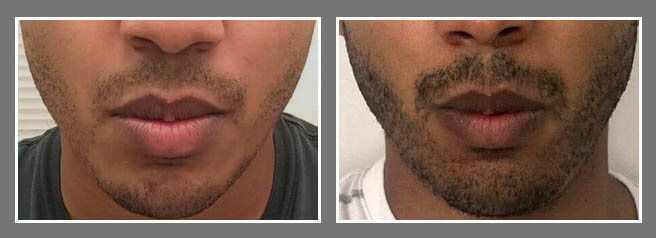The Facial Hair Transplants Procedure
Facial hair restoration is a specialized procedure that requires both surgical and artistic expertise. During your initial consultation, you and your surgeon will work together to establish your desired results for the shape and thickness of your improved facial hair.
On the day of the procedure, your surgeon will remove a small strip of hair from an inconspicuous donor area on your scalp. The strip is then dissected into small groups of hair, known as “follicular units,” of one or two hairs each. These units are then placed into minute incisions in the desired pattern and shape with precision to ensure natural, undetectable results.
After the transplant procedure, the transplanted hair grafts will shed and grow back over the next few months as they follow their natural growth cycle. These hairs will continue to grow just like those on your scalp, requiring trimming to maintain the appropriate length.
Eyebrow Hair Transplants
Eyebrows are an essential feature of our facial expressions, and well-shaped eyebrows complement the eyes and face. Eyebrow restoration uses the same techniques as scalp hair restoration to provide natural and permanent improvements to thin, sparse, or misshapen eyebrows.
During the procedure, the surgeon matches the direction and angle of the transplanted hair growth with the natural eyebrow hair. This is done by placing the follicular units individually to maximize density and achieve a natural appearance.
After the transplant procedure, the transplanted hair will follow the same growth cycle as normal eyebrow hair, growing longer and faster than the surrounding facial hair. Regular trimming will be required to maintain a natural and uniform appearance.
Facial Beard Hair Transplants
Facial hair can be sparse due to several factors, but our facial hair transplant specialists can help restore your confidence and personal style. The same state-of-the-art techniques used to restore hair to the scalp are used in facial hair transplant procedures.
Hair is harvested from your scalp and transplanted into tiny incisions in areas where more facial hair is desired. This results in a fuller beard, mustache, sideburns, or goatee, which are essential features for many patients.

